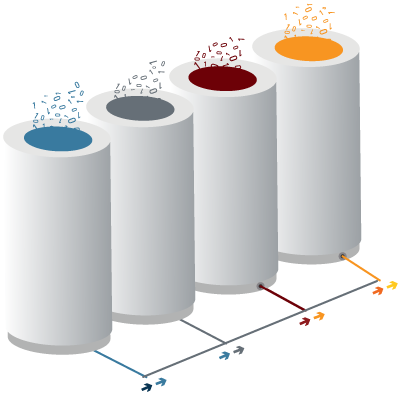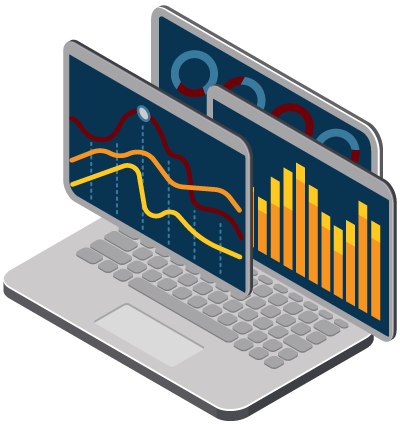Conduct Statistical Analysis
This stage begins with exploratory data analysis to discover patterns, identify anomalies, and test assumptions. Exploratory data analysis relies heavily on statistical methods and graphical representations of the data. The analysis performed varies by project and may include descriptive analytics to identify what has happened and diagnostic analytics to determine why it has happened. Supervised and unsupervised machine learning techniques (e.g., random forest, regression, decision trees, clustering) are used to identify trends and predict outcomes (predictive analytics). The analytical results are combined with model simulation results to recommend a course of action and propose the best strategies to achieve the desired outcomes (prescriptive analytics).
Our team of data scientists, policy researcher analysts, data analysts, and information technology experts are proficient in Python and related data science libraries, SQL, R, Tableau, PowerBI, Java, MATLAB, SAS, SPSS, and Stata. We leverage these analytical tools to achieve the project objectives.
Recognizing racial, ethnic, gender, and economic inequalities
All analysis is undertaken with a recognition of the racial, ethnic, gender, and economic inequalities, including the intersectional inequality, in our communities and thus the justice system. We engage stakeholders (e.g., justice system actors, administrators, policymakers, affected communities and individuals, and advocates) throughout the entire statistical analysis stage. This serves multiple purposes including understanding context, transparency, accountability, receiving feedback, gaining insights, reducing researcher bias, improving the quality of the results, and increasing trust in the deliverables.




